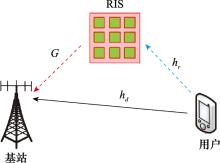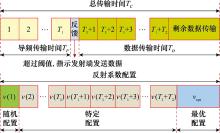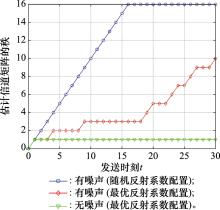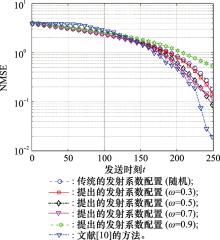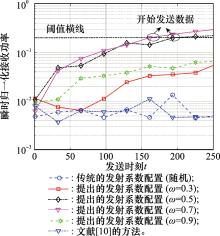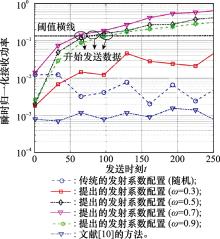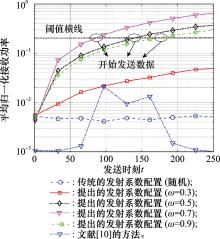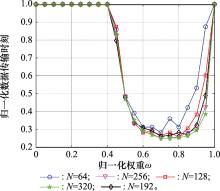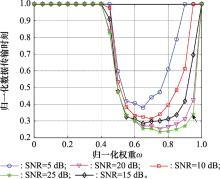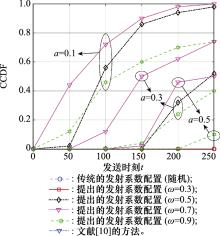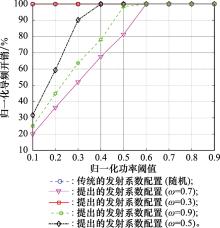| 1 |
MARCO D R , ZAPPONE A , DEBBAH M , et al. Smart radio environments empowered by reconfigurable intelligent surfaces: how it works, state of research, and the road ahead[J]. IEEE Journal on Selected Areas in Communications, 2020, 38 (11): 2450- 2525.
doi: 10.1109/JSAC.2020.3007211
|
| 2 |
WU Q Q , ZHANG R . Towards smart and reconfigurable environment: intelligent reflecting surface aided wireless network[J]. IEEE Communications Magazine, 2020, 58 (1): 106- 112.
doi: 10.1109/MCOM.001.1900107
|
| 3 |
LIANG Y C, LONG R Z, ZHANG Q Q, et al. Large intelligent surface/antennas (LISA): making reflective radios smart[EB/OL]. [2021-05-05]. https://arxiv.org/abs/1906.06578.
|
| 4 |
BASAR E , MARCO D R , JULIEN D R , et al. Wireless communications through reconfigurable intelligent surfaces[J]. IEEE Access, 2019, 7, 116753- 116773.
doi: 10.1109/ACCESS.2019.2935192
|
| 5 |
HU S , RUSEK F , EDFORS O . Beyond massive MIMO: the potential of data transmission with large intelligent surfaces[J]. IEEE Trans.on Signal Processing, 2018, 66 (10): 2746- 2758.
doi: 10.1109/TSP.2018.2816577
|
| 6 |
HUANG C W , ZAPPONE A , ALEXANDROPOULOS G C , et al. Reconfigurable intelligent surfaces for energy efficiency in wireless communication[J]. IEEE Trans.on Wireless Communications, 2019, 18 (8): 4157- 4170.
doi: 10.1109/TWC.2019.2922609
|
| 7 |
PAN C H , REN H , WANG K Z , et al. Multicell MIMO communications relying on intelligent reflecting surfaces[J]. IEEE Trans.on Wireless Communications, 2020, 19 (8): 5218- 5233.
doi: 10.1109/TWC.2020.2990766
|
| 8 |
TAHA A, ALRABEIAH M, ALKHATEEB A. Enabling large intelligent surfaces with compressive sensing and deep learning[EB/OL]. [2021-05-05]. https://arxiv.org/abs/1904.10136.
|
| 9 |
ALEXANDROPOULOS G C, VLACHOS E. A hardware architecture for reconfigurable intelligent surfaces with minimal active elements for explicit channel estimation[C]//Proc. of the IEEE International Conference on Acoustics, Speech and Signal Processing, 2020: 9175-9179.
|
| 10 |
WANG Z R , LIU L , CUI S G . Channel estimation for intelligent reflecting surface assisted multiuser communications: framework, algorithms, and analysis[J]. IEEE Trans.on Wireless Communications, 2020, 19 (10): 6607- 6620.
|
| 11 |
ZHOU Z Y , GE N , WANG Z C , et al. Joint transmit precoding and reconfigurable intelligent surface phase adjustment: a decomposition-aided channel estimation approach[J]. IEEE Trans.on Communications, 2021, 69 (2): 1228- 1243.
doi: 10.1109/TCOMM.2020.3034259
|
| 12 |
WANG P L , FANG J , DUAN H P , et al. Compressed channel estimation for intelligent reflecting surface-assisted millimeter wave systems[J]. IEEE Signal Processing Letters, 2020, 27, 905- 909.
doi: 10.1109/LSP.2020.2998357
|
| 13 |
JIA C L, CHENG J Q, GAO H, et al. High-resolution channel estimation for intelligent reflecting surface-assisted mmWave communications[C]//Proc. of the IEEE 31st Annual International Symposium on Personal, Indoor and Mobile Radio Communications, 2020.
|
| 14 |
HAN Y , TANG W K , JIN S , et al. Large intelligent surface-assisted wireless communication exploiting statistical CSI[J]. IEEE Trans.on Vehicular Technology, 2019, 68 (8): 8238- 8242.
doi: 10.1109/TVT.2019.2923997
|
| 15 |
陈淑菁. 大规模MIMO信道估计与信号检测理论方法研究[D]. 江苏: 东南大学, 2018.
|
|
CHEN S J. Channel estimation and signal detection for massive MIMO systems[D]. Jiangsu: Southeast University, 2018.
|
| 16 |
张贤达. 矩阵分析与应用[M]. 北京: 清华大学出版社, 2004.
|
|
ZHANG X D . Matrix analysis and applications[M]. Beijing: Tsinghua University Press, 2004.
|
| 17 |
WU Q Q , ZHANG R . Intelligent reflecting surface enhanced wireless network via joint active and passive beamforming[J]. IEEE Trans.on Wireless Communications, 2019, 18 (11): 35394- 5409.
|
